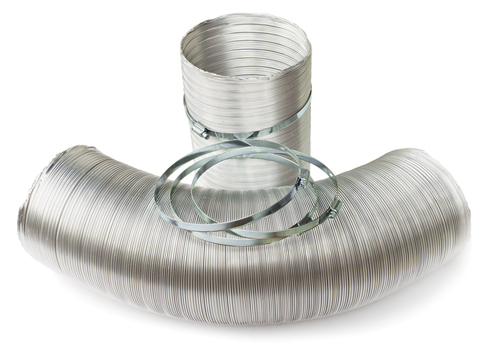 A properly designed ductwork system will account for your homes size, layout, and building design to provide maximum comfort for your home at the lowest cost possible. Likewise, a poorly designed system will take away from your home’s comfort level and waste money through leaks, inefficiency, and flawed planning. If your home is experiencing pockets of either extreme hot or cold air, you may need to consider a redesign of your system to address these issues.
A properly designed ductwork system will account for your homes size, layout, and building design to provide maximum comfort for your home at the lowest cost possible. Likewise, a poorly designed system will take away from your home’s comfort level and waste money through leaks, inefficiency, and flawed planning. If your home is experiencing pockets of either extreme hot or cold air, you may need to consider a redesign of your system to address these issues.
Short, straight duct runs provide the most efficient method to deliver heated and cooled air throughout a home. Unfortunately, houses often contain areas where ductwork design must incorporate extreme angles and narrow passages to route air through the entire house. As a result, it is essential to design the ductwork well for maximized efficiency and low energy bills.
Ductwork Design
Regardless of the complexities of your home, your ductwork should be designed to avoid 90 degree or T-angle turns. These joints will always be low performing areas for the ducts. Simply put, air flows more effectively in a straight line. It will resist the requirement to bend sharply. This will put increased pressure on the joints, allowing air to seep through. Instead, talk to your contractor about incorporating Y joints into the design. These joints allow for the air to move more smoothly while reducing the pressure on the joint and increasing the efficiency of air movement.
Furthermore, your HVAC system should be located centrally within the home. Your ductwork will then run throughout the living space from that central location. This prevents the air from traveling over great distances, thereby reducing the opportunity for air leakage within the duct system.
Balanced Airflow
When most people think about an HVAC system, they only think about the conditioned air for their home. But an HVAC system must be designed to provide a balanced system of airflow throughout your home. One integral part is the delivery of conditioned air. The other, equally important part of the design must be the return system to provide healthy indoor air quality. Return ducts work to return the stale air back to the main unit to be reconditioned. This allows for a constant flow of fresh air throughout the home. If your ductwork design does not effectively incorporate supply and return ducts, you may experience stale or stagnant air in portions of your home. This may be a result of poor design or inadequate airflow throughout the home.
Types of Ductwork
Two types of ductwork are commonly used in homes: flexible and metal. Depending on local building codes, you may opt for either type. However, there are benefits and drawbacks to each system. Upfront costs for the flexible systems are generally less than a metal duct system, but the long term costs will be greater. This is because the flexible system is more susceptible to ruptures and leakage problems than their rigid metal counterparts. Flexible ducts also have a much shorter lifespan than metal ducts. Metal ducts, if properly designed and insulated, are more expensive and a bit more difficult to install but will increase the efficiency of airflow while lasting much longer than a flexible system.
Size Matters
Not all HVAC systems utilize the same requirements for ductwork size. Heat pumps will require larger ducts than a central unit. Before determining the size of the ductwork necessary for your home, your contractor should evaluate the type of system you currently have or plan to install. The length of the run required and the individual room conditions, including the number of windows, ceiling height, and square footage also need to be taken into consideration. Individual room by room calculations should be conducted to provide for maximum comfort. These calculations should be performed according to ACCA standards.
To review your ductwork design or evaluate your home’s energy efficiency, contact us at Bryans United Air Conditioning.
Written by Zach Mouton
Image Provided by Shutterstock.com

